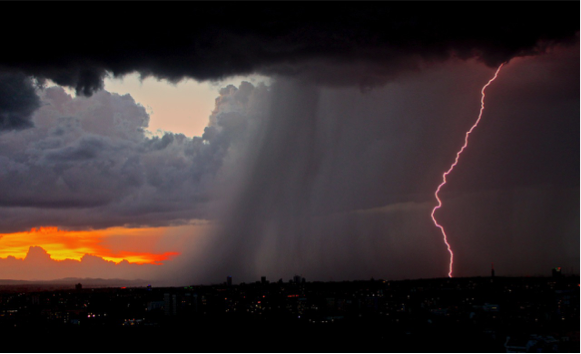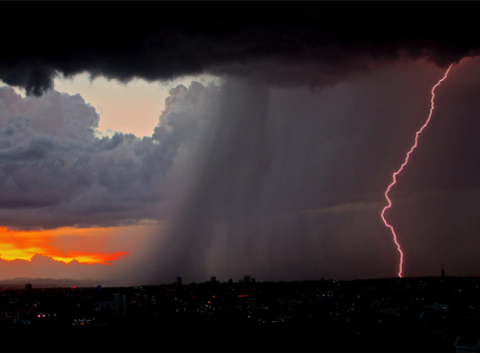 Lightning is one of the most deadly natural phenomena with bolt temperatures hotter than the surface of the sun. As electrical engineers know, lightning can increase personnel injury, equipment downtime, facility fire and other risks.
Lightning is one of the most deadly natural phenomena with bolt temperatures hotter than the surface of the sun. As electrical engineers know, lightning can increase personnel injury, equipment downtime, facility fire and other risks.
While it may be understood that lightning can cause catastrophic damage to facilities, equipment and personnel, there are ways to reduce risks. But before we reduce the dangers associated with lightning strikes, let’s pull back the curtain on the basics of a lightning strike.
What Causes a Lightning Strike
Before lightning strikes, it’s first developed as a result of unique atmospheric conditions. First, the upper atmosphere becomes unstable due to a combination of warmer heat and a vertical air column on the cooler upper air mass. Rising air masses from this combination carry water vapor, which increases the convective storm activity when it’s met with cooler air.
From there, pressure and temperature form the basis of a cumulonimbus cloud. For lightning to be generated, the cloud must be between three and four kilometers deep. The taller the cloud, the more likely it is for lightning to generate.
About 90% of all lightning flashes are cloud to cloud, with the remaining 10% being cloud-to-ground flashes. The cloud-to-cloud strikes are also the most powerful.
How to Protect Your Facility from Lightning Strike Damage
While no lightning protection system is 100% effective, there are certain methods to follow to reduce risk. Those risks range from unsafe working conditions to mechanical damage within the facility.
An effective lightning protection system must do the following:
- Intercept lightning flash to create a preferred point of strike
- Conduct the strike to the earth
- Dissipate current into the earth
- Create an equipotential bond to prevent hazardous potential differences
In addition, consider the ERICO Six Point Plan of Protection, which helps implement the most effective solutions in a holistic strategy that provides comprehensive lightning protection.
Are you ready to learn more about lightning protection for your facility? Download our latest whitepaper, Interception Efficiency of CVM-based Lightning Protection Systems, to learn how you can use an alternative lightning protection method to protect your facility.
Image credit: Pixabay, CC0 Public Domain

